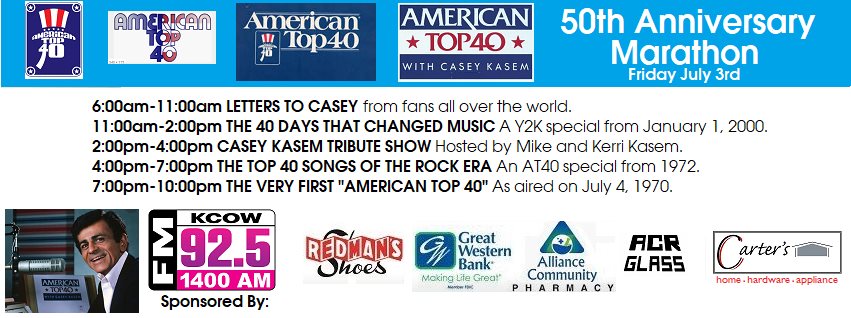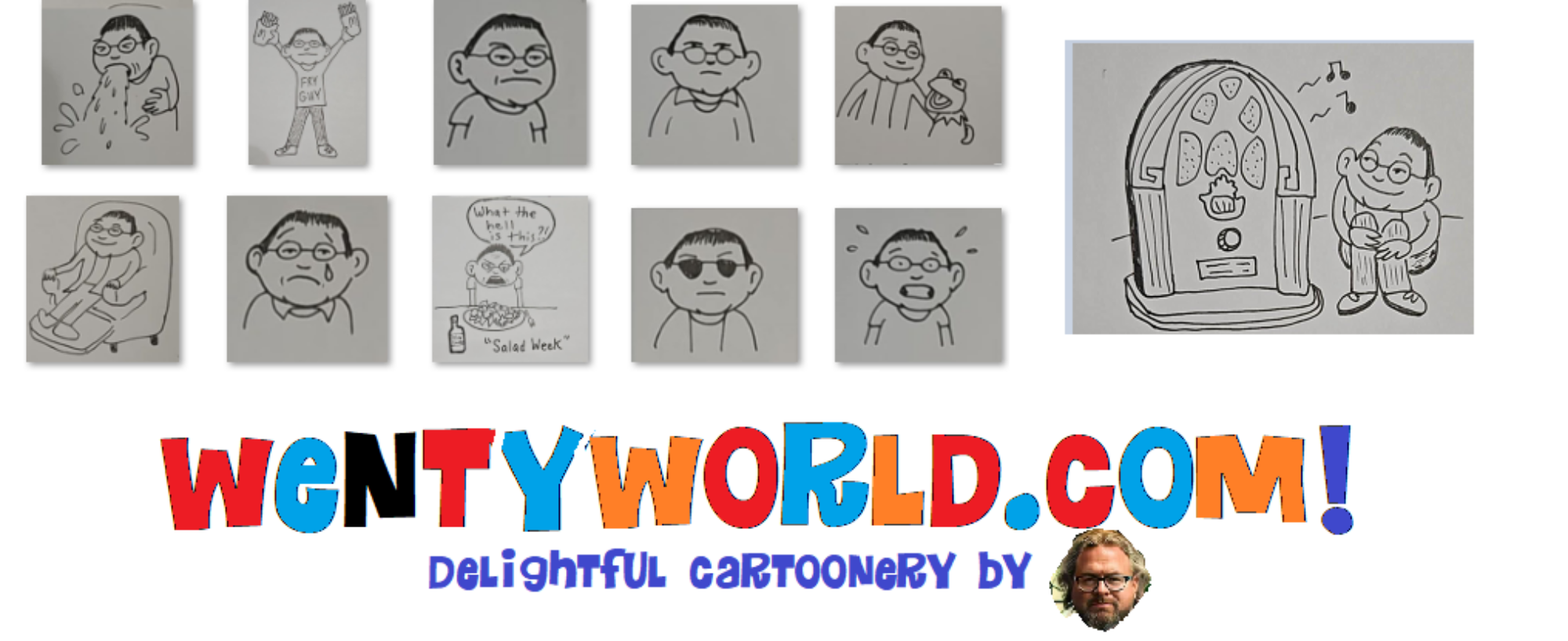On the July 4th weekend of 1970, a radio institution was born. Casey Kasem, a Southern California disc jockey joined with two other notable figures to create “American Top 40.” The concept, brilliant in its simplicity, was this: Every week you’ll hear the 40 most popular songs in the USA, played from 40 all the way to number one.
Countdowns and “hit lists” were nothing new to radio; just about every top 40 station in the nation offered a printed version of their top tunes, and many of them did a show where all of the songs on the list were played.
What made “American Top 40” different? First of all, this was the countdown of record: the official top 40 from Billboard magazine, one of the most trusted sources for radio programmers, record sellers and other avenues for music.
The second thing that made “American Top 40” different was Casey Kasem. His warm, personal delivery was a big departure from the boisterous, bombastic “boss jocks” of the day. We air a show on KCOW called “Live From The 60’s” that was hosted by one of the top purveyors of that particular style, The Real Don Steele. Boss jocks were fun–wild, crazy personalities who used sound effects, humor and pure energy to entertain. But where boss jocks talked at you, Casey Kasem (and radio personalities as a whole in the 1970s forward) talked to you. Casey was warm, friendly, conversational…an accomplishment made all the more remarkable considering he was on the air “coast to coast and around the world.” (Put it another way: It’s easy for me to develop instant relatability with my local audience by talking about local places, local people, local events. Casey had that same relatability without that kind of thing.
As programs from the modern era of radio* go, “American Top 40” is on a very short list. It has received a degree of attention matched by few. Pete Battistini wrote and compiled two marvelous reference volumes on AT40–one for the 70’s, one for the 80’s. They’re excellent books, and I would say that even if I wasn’t quoted in one of them.
Rob Durkee’s book “American Top 40: The Countdown Of The Century” takes a biographical approach to the creation and increasing popularity of the show, with sections focusing on Casey’s departure from the series (to be replaced by….flecch…Shadoe Stevens) and ultimate triumphant return. And yes, there’s a chapter on the dead dog tape.
Some people only know Casey Kasem as the guy from the “dead dog tape.” And…being perfectly honest here…it’s hilarious. It’s also filled with salty language. You have been warned.
Casey sued the band Negativland for using some of the audio on one of their…uh…songs? Or whatever is they call them? But Casey, in time, came to see the humor in it as well. And honestly, I have to sympathize with him. Anybody who’s ever been in that little room with the microphone can tell you: You’d hate to see the language you use on your worst day become a public spectacle.
Here’s a better way to remember Casey Kasem:
Another sign of the unique status of “American Top 40”: it’s still on the radio! Now, of course, Ryan Seacrest is the host of the current edition…the less said about that the better. But radio stations all over the nation still air Casey’s episodes from the 70’s and 80’s, distributed by Premiere Networks. (Nobody seems willing to put “radio” in the name of their company anymore. It’s now “ABC Audio” and the like. You people are in the RADIO business, damn it! Be proud!)
Because those reruns are still syndicated, that gives us at KCOW the chance to really celebrate AT40’s 50th! We’ll be doing that on Friday July 3rd from 6:00am to 10:00pm with a variety of AT40 specials (including one from 2000 where Casey discusses the then-current Latin music craze) and tribute shows. The nice folks at Premiere really swung the vault door wide open this time so we’ll be airing some more classic AT40 specials through the end of the year. Speaking of nice folks! Our sponsors: Alliance Community Pharmacy, ACR Glass, Great Western Bank, Redman’s Shoes and Carter’s Home Hardware and Appliance!

*I define the start of the modern era of radio as around 1960 or thereabouts, when all dramatic network programs (“Suspense”, “Jack Benny”, etc.) had ceased and music became the dominant program material on most radio stations. There are plenty of arguments for later dates as the start of the “modern era”–the end of music on most AM stations, etc. But it’s my blog and that’s how I define it.
